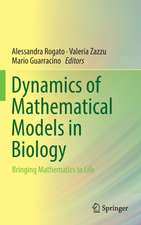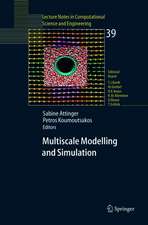Power Prediction Modeling of Conventional High-Speed Craft
Autor Dejan Radojčić, Milan Kalajdžić, Aleksandar Simićen Limba Engleză Paperback – 8 noi 2020
The most significant factors for in-service power prediction are bare hull resistance, dynamic trim, and the propeller’s open-water efficiency. Therefore, mathematical modeling of these factors is a specific focus of the book. Furthermore, the book includes a summary of most of the power-prediction-relevant literature published in the last 50 years, and as such is intended as a reference overview of the best high-speed craft modeling practices.
Once these mathematical models have been developed and validated, they can be readily programmed into software tools, thereby enabling the parametric analyses required for the optimization of a high-speed craft design. The proposed book is intended primarily for naval architects who design and develop various types of high-speed vessels (yachts, boats etc.), as well as for students who are interested in the design of fast vessels. The book includes useful Excel Macro Codes for the outlined mathematical models. Moreover, software for all considered models is provided.
| Toate formatele și edițiile | Preț | Express |
|---|---|---|
| Paperback (1) | 727.97 lei 6-8 săpt. | |
| Springer International Publishing – 8 noi 2020 | 727.97 lei 6-8 săpt. | |
| Hardback (1) | 1004.70 lei 6-8 săpt. | |
| Springer International Publishing – 8 noi 2019 | 1004.70 lei 6-8 săpt. |
Preț: 727.97 lei
Preț vechi: 887.76 lei
-18% Nou
Puncte Express: 1092
Preț estimativ în valută:
139.32€ • 145.07$ • 117.74£
139.32€ • 145.07$ • 117.74£
Carte tipărită la comandă
Livrare economică 10-24 martie
Preluare comenzi: 021 569.72.76
Specificații
ISBN-13: 9783030306090
ISBN-10: 3030306097
Pagini: 252
Ilustrații: XXIII, 252 p.
Dimensiuni: 155 x 235 mm
Greutate: 0.45 kg
Ediția:1st ed. 2019
Editura: Springer International Publishing
Colecția Springer
Locul publicării:Cham, Switzerland
ISBN-10: 3030306097
Pagini: 252
Ilustrații: XXIII, 252 p.
Dimensiuni: 155 x 235 mm
Greutate: 0.45 kg
Ediția:1st ed. 2019
Editura: Springer International Publishing
Colecția Springer
Locul publicării:Cham, Switzerland
Cuprins
Introduction.- Mathematical Modeling.- Resistance and Dynamic Trim Modeling.- Propeller’s Open-Water Efficiency Modeling.- Additional Resistance Components and Propulsive Coefficients.- Power Modeling.- Concluding Remarks.- Resistance and Dynamic Trim Predictions.- Propeller’s Open-Water Efficiency Prediction.- Power Prediction.
Notă biografică
Professor Dejan Radojčić is a Naval Architect with 40 years of academic and industrial experience, covering research focused on ship design and hydrodynamics. Academic experience (1979-2014) rising from teaching assistant to full professor and Head of the Naval Architecture department at the Faculty of Mechanical Engineering, University of Belgrade. Participated in a series of international (EU) and domestic projects on ship design, ship hydrodynamics, shallow draught vessels, optimization of propulsion systems etc., frequently focused on special high-speed craft of displacement, semi-displacement or planing type. Collaborated with leading European universities and research institutions. Published a number of often cited scientific papers, including some on the hydrodynamics of high speed craft currently implemented in commercial CAD software. As a member of a research team, received in 2015 SNAME’s The Vice Admiral E.L.Cochrane Award for best peer-reviewed paper published by SNAME. Co-authored a book (in Serbian) on High Speed Vessels in Shallow Water. Former president of SNAS (Society of Naval Architects of Serbia), member of RINA and SNAME. Milan Kalajdžić, PhD, is Assistant Professor at the Department of Naval Architecture, Faculty of Mechanical Engineering, University of Belgrade. He is a Naval Architect with 13 years of experience in research, design and teaching, primarily in hydrodynamics, mathematical modeling, nonlinear ship motion of conventional and unconventional vessels, and its 3 applications on sailing yachts and planing craft. He was also engaged on application of ANN methods for analysis of experimental data. M Kalajdžić was involved in various industry projects, primaly dealing with small craft, unconventional vessels and yachts. In recognition of his work, as a member of the research team, he received RINA‐Lloyd’s Register Educational Trust Ship Safety Award for 2007 and RINA WAKEHAM Prize for 2010. He is a member of SNAS (Society of Naval Architects of Serbia) and RINA.
Aleksandar Simić, PhD, is an Assistant Professor at the Department of Naval Architecture, Faculty of Mechanical Engineering, University of Belgrade. He is a Naval Architect with 20 years of experience in research, design and teaching, primarily in hydrodynamics of conventional and unconventional vessels. He was involved in development of several mathematical models based on the experimental data derived on models representing unconventional high-speed hull series. In recognition of his work, as a member of the research team, he received in 2015 SNAME’s The Vice Admiral E.L.Cochrane Award for best peer-reviewed paper published by SNAME. He is a member of SNAS (Society of Naval Architects of Serbia), RINA and SNAME.
Aleksandar Simić, PhD, is an Assistant Professor at the Department of Naval Architecture, Faculty of Mechanical Engineering, University of Belgrade. He is a Naval Architect with 20 years of experience in research, design and teaching, primarily in hydrodynamics of conventional and unconventional vessels. He was involved in development of several mathematical models based on the experimental data derived on models representing unconventional high-speed hull series. In recognition of his work, as a member of the research team, he received in 2015 SNAME’s The Vice Admiral E.L.Cochrane Award for best peer-reviewed paper published by SNAME. He is a member of SNAS (Society of Naval Architects of Serbia), RINA and SNAME.
Textul de pe ultima copertă
The proposed book addresses various power prediction methods, a principal design objective for high-speed craft of displacement, semi-displacement, and planing type. At the core of the power prediction methods are mathematical models based on experimental data derived from various high-speed hull and propeller series. Regression analysis and Artificial Neural Network (ANN) methods are used as extraction tools for this kind of models.
The most significant factors for in-service power prediction are bare hull resistance, dynamic trim, and the propeller’s open-water efficiency. Therefore, mathematical modeling of these factors is a specific focus of the book. Furthermore, the book includes a summary of most of the power-prediction-relevant literature published in the last 50 years, and as such is intended as a reference overview of the best high-speed craft modeling practices.
Once these mathematical models have been developed and validated, they can be readily programmed into software tools, thereby enabling the parametric analyses required for the optimization of a high-speed craft design. The proposed book is intended primarily for naval architects who design and develop various types of high-speed vessels (yachts, boats etc.), as well as for students who are interested in the design of fast vessels. The book includes useful Excel Macro Codes for the outlined mathematical models. Moreover, software for all considered models is provided.
Caracteristici
Focuses specifically on mathematical modelling of the most significant factors for in-service power prediction: bare hull resistance, dynamic trim, and propeller's open-water efficiency Fills the gap in best design practices for high-speed crafts Discusses several models and methods























